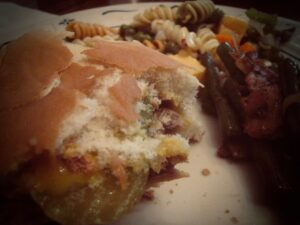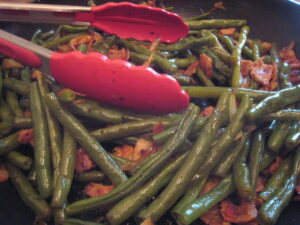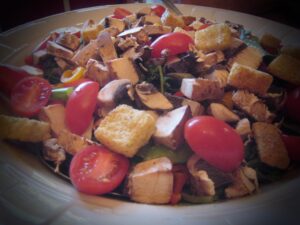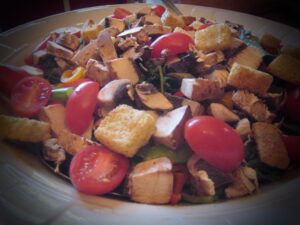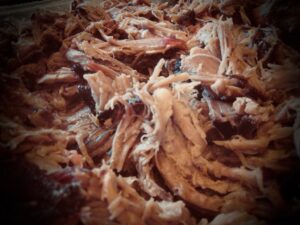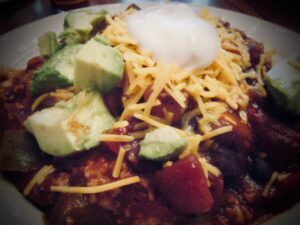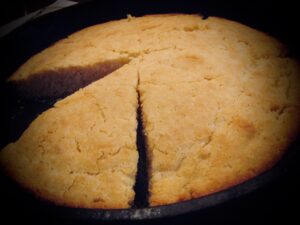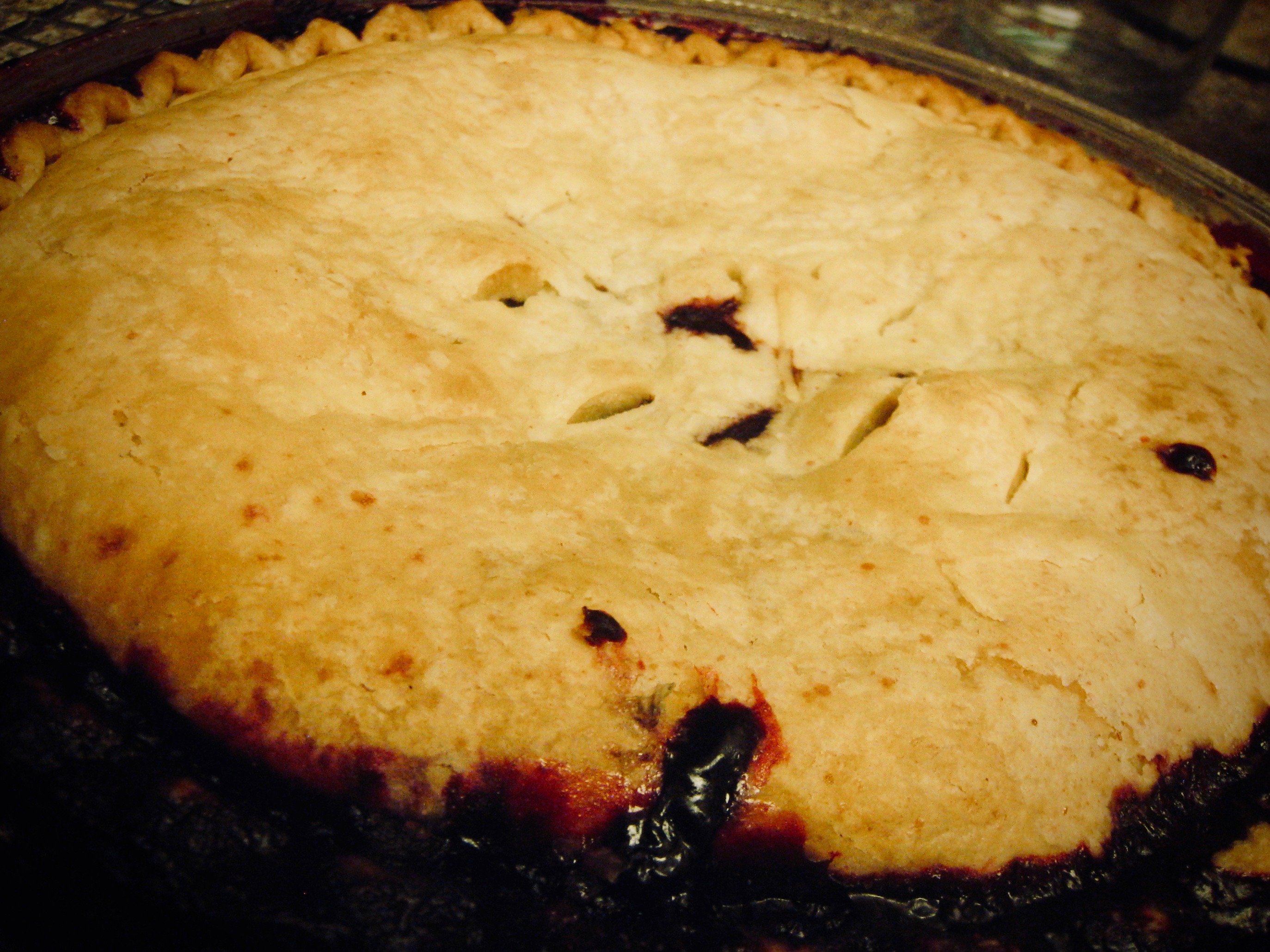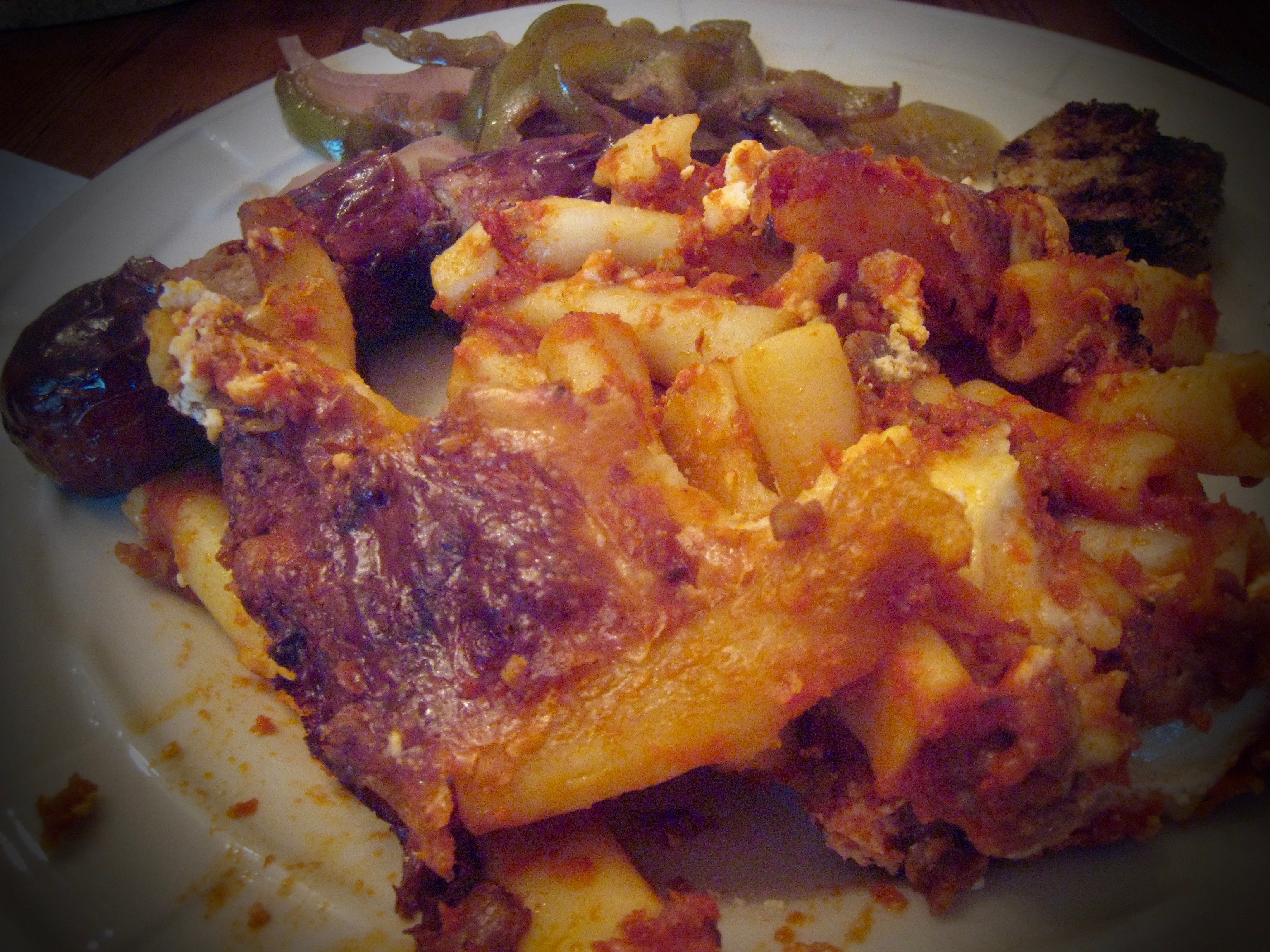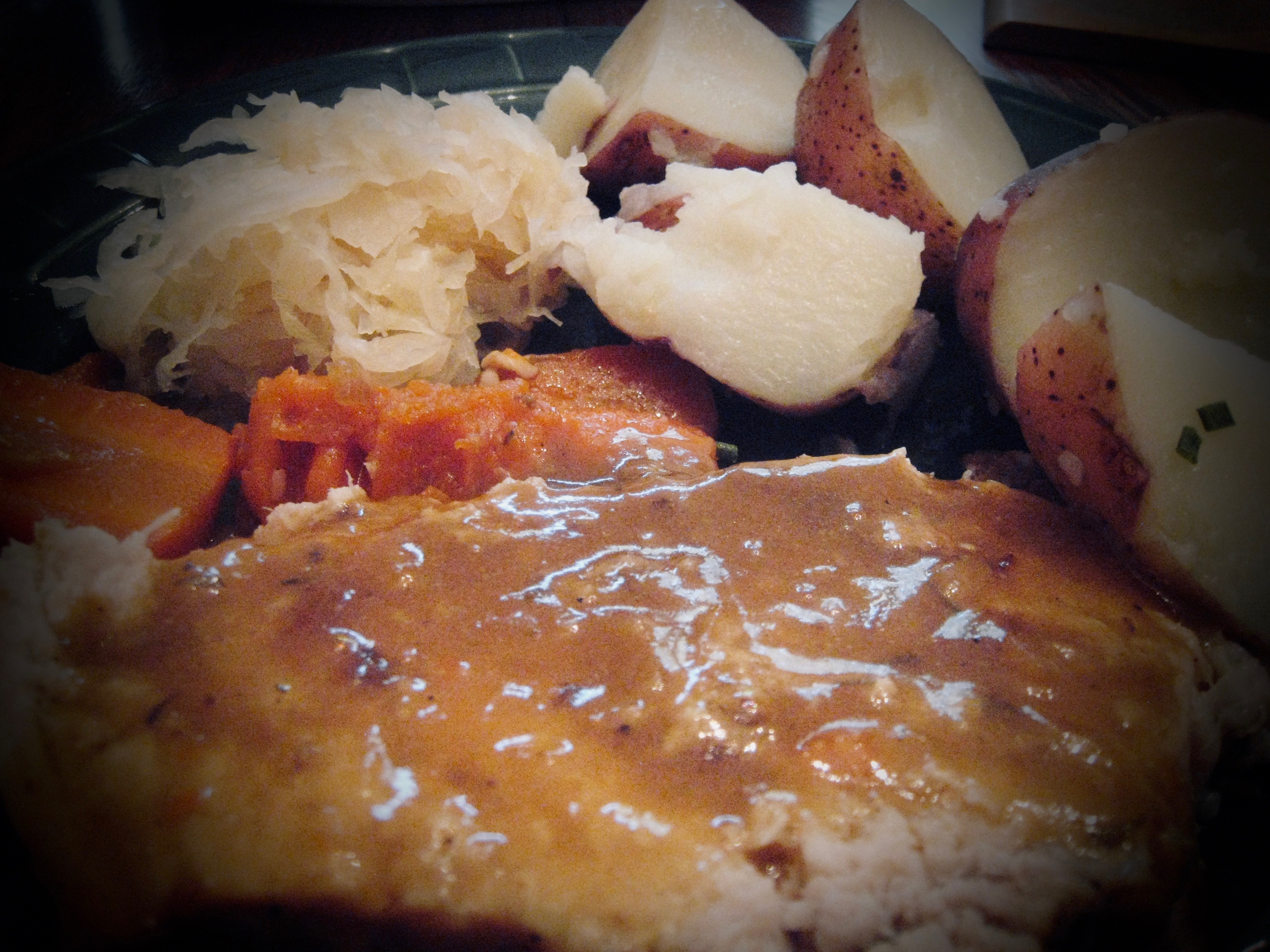Sunday Dinner – 16 September 2018
This is the first time we’ve repeated a main course for Sunday Dinner in 2018. We had a six pound Boston Butt in the freezer, and the weather was favorable, so it was hard to resist the long cook.
I was up at around 6:30 AM to set up the Weber Kettle and start the coals. I’d rubbed the pork shoulder Saturday Evening with my usual seasonings, and set up the Kettle as usual with a drip pan full of water between ten unlit briquettes on each side. I added several lit coals and some wood chunks before placing the pork on the grate. After about three hours, I wrapped the pork in foil to get it through the stall, and eventually moved it over to the Genesis Gas Grill to finish. After about six and a half hours total, the internal temp was 203 degrees F. We let it rest for about another hour before shredding.
I’d made pasta salad on Friday evening, and Claudia made a delicious green salad, plus some truly amazing green beans with onions and bacon for sides. The wine was from F. Stephen Millier (a Lodi Shiraz which paired perfectly with the barbecue). Claudia also made brownies for dessert.
We’re missing Aunt Pat while she spends some time with family out west. It was another lovely Sunday with Grammy and Grampy, though. It’s such a blessing to be able to be in their company each week.
